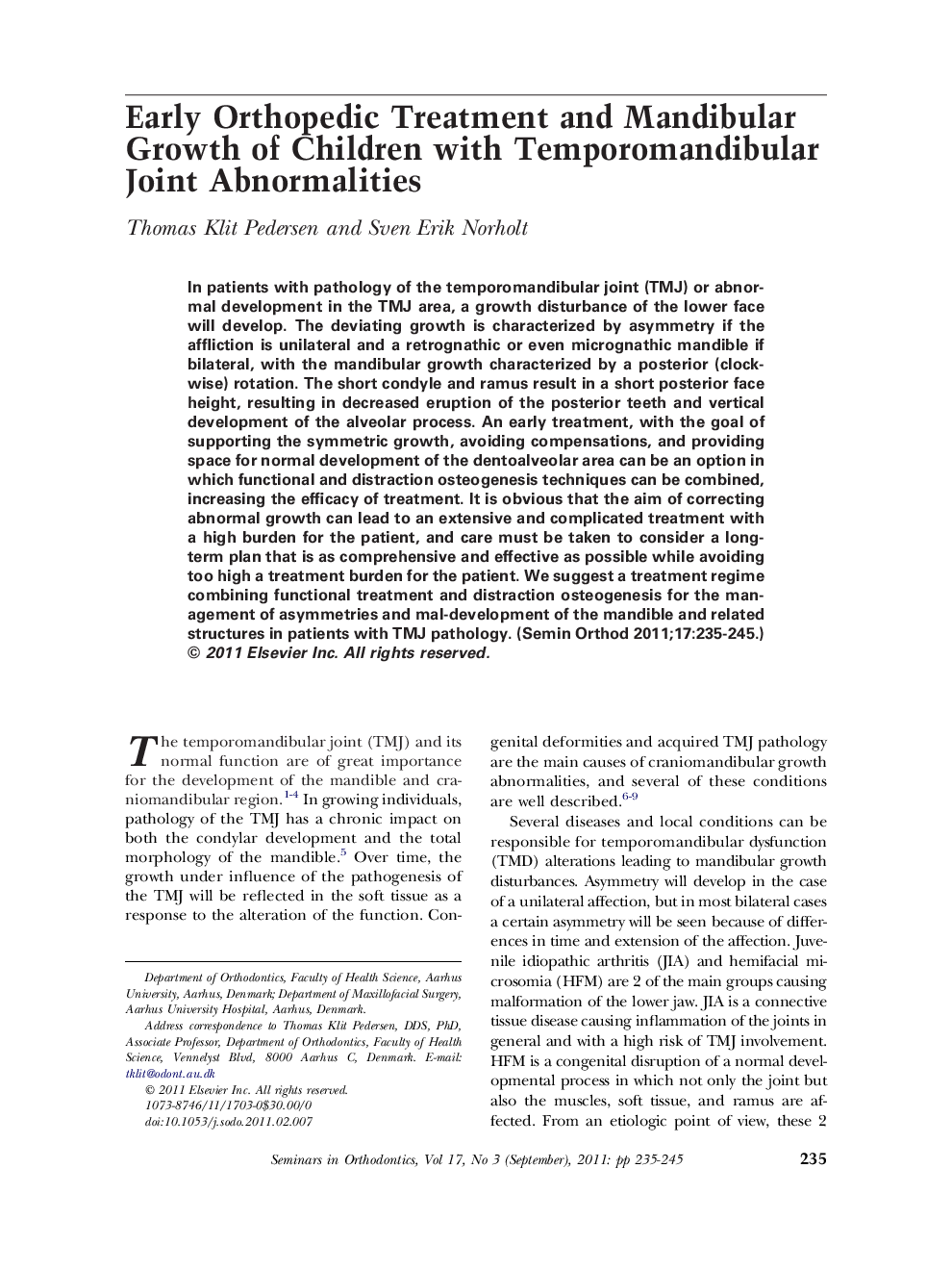| Article ID | Journal | Published Year | Pages | File Type |
|---|---|---|---|---|
| 3175598 | Seminars in Orthodontics | 2011 | 11 Pages |
In patients with pathology of the temporomandibular joint (TMJ) or abnormal development in the TMJ area, a growth disturbance of the lower face will develop. The deviating growth is characterized by asymmetry if the affliction is unilateral and a retrognathic or even micrognathic mandible if bilateral, with the mandibular growth characterized by a posterior (clockwise) rotation. The short condyle and ramus result in a short posterior face height, resulting in decreased eruption of the posterior teeth and vertical development of the alveolar process. An early treatment, with the goal of supporting the symmetric growth, avoiding compensations, and providing space for normal development of the dentoalveolar area can be an option in which functional and distraction osteogenesis techniques can be combined, increasing the efficacy of treatment. It is obvious that the aim of correcting abnormal growth can lead to an extensive and complicated treatment with a high burden for the patient, and care must be taken to consider a long-term plan that is as comprehensive and effective as possible while avoiding too high a treatment burden for the patient. We suggest a treatment regime combining functional treatment and distraction osteogenesis for the management of asymmetries and mal-development of the mandible and related structures in patients with TMJ pathology.
